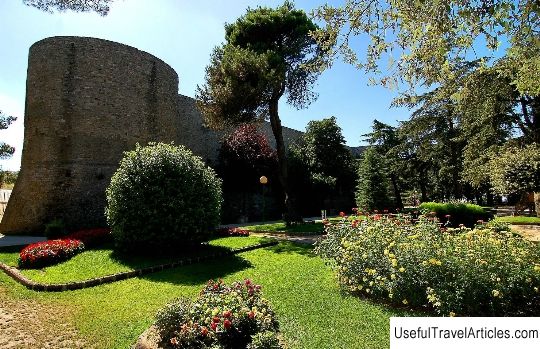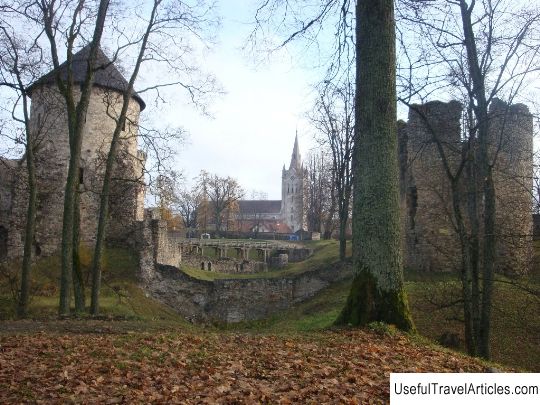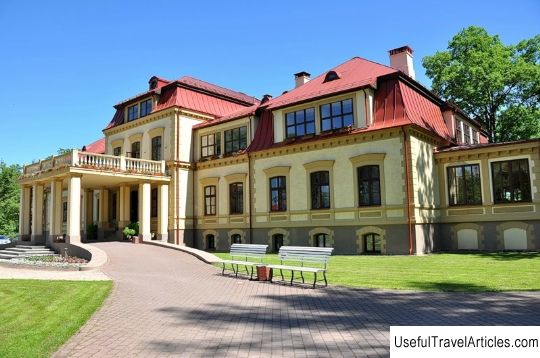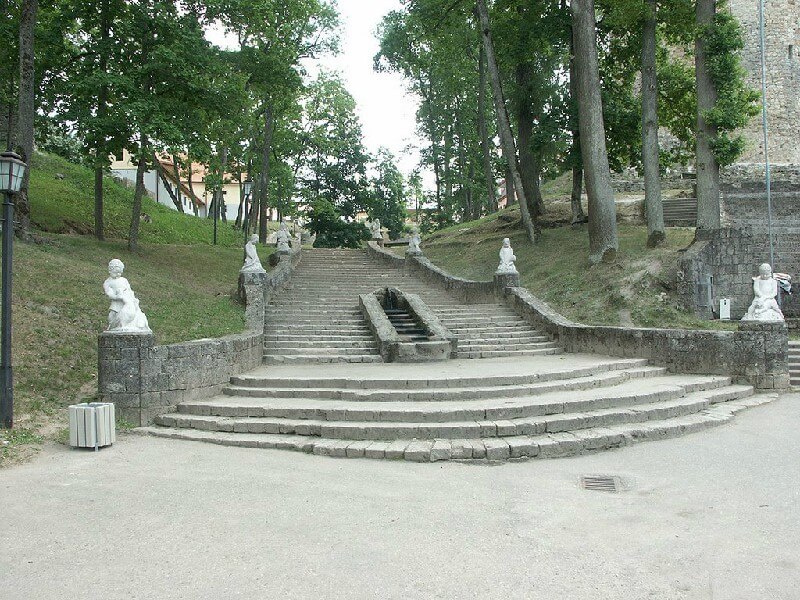Araisu lake castle (Araisu ezerpils) description and photos - Latvia: Cesis
Rating: 7,6/10 (700 votes) 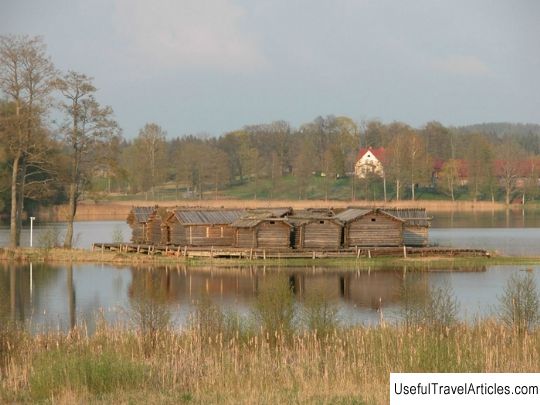
Araisu lake castle (Araisu ezerpils) description and photos - Latvia: Cesis. Detailed information about the attraction. Description, photographs and a map showing the nearest significant objects. The title in English is Araisu ezerpils. Photo and descriptionAraisi Lake Castle is located in the Airashi settlement, 7 km south of Cesis. The castle is a reconstruction of an ancient Latgale castle on the water. The buildings of the ancient Latgalians of the 9th century were reconstructed, taking as a basis the remains of wooden structures and various ancient objects discovered here during archaeological excavations. Airashi is one of the few places in the country where the remains of a mammoth were found. Lake Ayrashi in the distant past was much larger. Now its area is about 30 hectares, the maximum depth reaches 11 meters. In ancient times, the appearance of the so-called "lake castles" was natural in this lake region. Ayrash Castle is the first most extensively researched castle of this type, that is why the idea of reconstruction of the castle and the opening of an open-air museum appeared. Visitors to the райraisi Lake Castle often wonder why this bunch of wooden buildings is called a castle. If in summer a water barrier can be considered a kind of protection against invasion, then in winter, when the water in the lake freezes, nothing could protect these wooden houses from attack. However, in ancient times, the climate in the territory where the castle is located today was somewhat warmer, and in winter the lake froze, then only for a short time. Therefore, in winter, the lake was also a protection for the settlement. That is why archaeologists call these structures a castle. Interest in the ruins of the Araisi castle appeared in 1876, then the cessian count K.-G. Sievers opened this castle as a monument, believing that it is the remains of a Stone Age raft. Later, various hypotheses were presented about the origin of these buildings and the clarification of what they really were. However, no one carried out excavations to confirm this or that hypothesis. In the period from 1959 to 1964. During the survey of underwater archaeological monuments in Latvia, the remains of 9 more settlements were found in the lakes of the region. Similar to those found on Lake Araisi. It became clear that a new category of archaeological sites was discovered. Araisi Lake Castle was chosen to carry out large-scale research. The research was carried out from 1965 to 1979 under the leadership of J. Apals. As a result of the excavations it became clear that the lake settlement was created in the 9-10th centuries, and the Latgalians, the most numerous of the ancient Latvian tribes, lived there. The foundations of the dwellings have been preserved almost completely; the remains of wooden buildings have been partially preserved. To explore the castle, scientists sank to the bottom with scuba diving. The remains of the buildings were covered with a thick layer of silt. Not only wooden structures were found, but also various ancient objects: earthenware, vessels, etc. Over the entire period of archaeological excavations, about 150 structures were discovered. The castle itself was a complex of buildings located on a rectangular log deck. The castle consisted of 5 rows of chicken huts and outbuildings, which were located along the perimeter of the site in 4 rows. Between the dwellings there were streets, from one and a half to three and a half meters wide. Log walls were laid out around the castle to protect it. The castle was connected to the shore by a fill dam. It is assumed that the castle was inhabited by different strata of society, as evidenced by the ancient objects found, as well as the discovered dwellings, which differ in size and volume. The fact that the remains of the castle fell under the water can be easily explained. Previously, the water level in the lakes was much lower than today. However, in the 10th century, a period of high humidity with frequent rainstorms began in the northern hemisphere of the Earth. As a result, the water level in the lakes rose rapidly. Water preserved the buildings, and thus the remains have survived to this day. The raisi Lake Castle Museum was founded in 1983. Various celebrations and events are held here today.       We also recommend reading Nikolsky Monastery description and photos - Russia - Golden Ring: Pereslavl-Zalessky Topic: Araisu lake castle (Araisu ezerpils) description and photos - Latvia: Cesis. |
